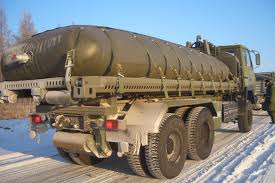
Many Moons ago, I worked for American La France... They make fire trucks of various sizes and applications... we were charged with completing warranty repairs on their 304L Stainless stl. 50, 750 and 1000 gallon water tanks which were used to prime the pumps in the fire trucks for the New York City Fire Department as well as many different fire department surrounding the Great NY metro region and quite a few trucks from up & down the eastern part of the USA...
These tanks had baffles in them to control the sloshing of the water in side the tanks while the trucks were en route to a call... The problem was that these tanks were not designed properly to handle all of the various dynamic loads & stresses water of the amounts listed above as it moved around in the tank as well as the tank itself being exposed to to loads that flexed the crap out of those tanks which were no mounted into the trucks on vibration isolators & dampeners that could counteract such changes of various dynamic stresses that literally tore those tanks apart over time in as little as 2 to 3 years... In other words the tanks were not only designed poorly, they were also mounted to the trucks improperly which would also cause premature failures in the form of cracks that were usually of the SCC type...
Well the savvy engineers @ La France came up with a fix that turned out to be nothing more than band aids on some widely open wounds to stop the bleeding and the size & amount of wounds were too much to fix with "Band-aid" approach!





I say this because the so-called "Fix"that the engineers came up with lasted only another two or three more years if they were lucky, and if they were over three years after the so-called "Fix" was applied to a tank before it started to leak again, the tanks were no longer covered under warranty which I thought was close to being criminal...
So how did these fire department eventually permanently fix these water tanks??? They decided to retro-fit their trucks with fiberglass tanks instead and the problems they had were no longer an issue! So go Fiberglass if you're not satisfied with the design and condition of the tank your customer wants to use... I mean the majority of underground gasoline tanks all over the USA have been replaced from steel to fiberglass and they weren't even exposed to dynamic loads & stresses which is another thing to consider.



Good luck with which ever route you take Rio.
Respectfully,
Henry









 Good luck with which ever route you take Rio.
Good luck with which ever route you take Rio.







 Here's the link:
Here's the link: